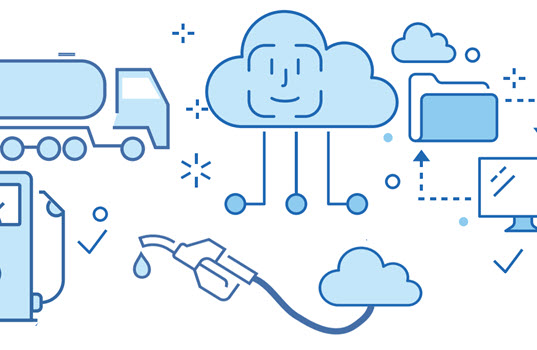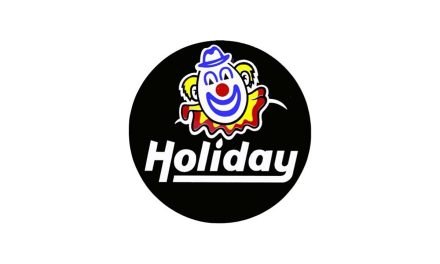By Brian Reynolds
The petroleum business in general has always amazed me. The motor fueling business is responsible for a gigantic percentage of the U.S. economy, yet it often remains one of the most technologically strapped industries. Old habits are hard to break, but our industry is on the precipice for making gigantic leaps of technical advancement.
One of these major advancements is with cloud computing. Cloud computing is the on-demand availability of computing power, without direct active management by the user. Our industry is a “use it up and wear it out” one. It is a big deal to replace existing pieces of hardware in a convenience store. However, many legacy pieces of technology that are now approaching 25 to 30 years of age, such as an automatic tank gauge (ATG), can be easily and inexpensively converted to a cloud system. Older and probably thought of as technically limited point of sale (POS) devices can also be converted inexpensively to a cloud system.
The value of enhancing an older system is that information that may have been historically difficult to aggregate can very quickly and efficiently be transmitted and made available through the cloud. Some of the data categories that are now being routed through the cloud are:
- Environmental compliance records
- Fuel dispatch such as inventories and deliveries
- Dispenser flow rates
- Down dispenser
- Price sign and dispenser price changes
- Fuel delivery cross drops
- Water notifications
- Dispenser product mapping such as blend ratio
With cloud computing, not only can an operator see activity and status of an individual site, an operator can see these activities at all the sites at once and in near real-time speeds!
Environmental Compliance Records
Many operators use the ATGs for compliance. Older ATG systems are reliant on a site manager to “harvest” printed reports for a pass or fail summary. With cloud computing a store operator can depend on the cloud for collecting every store’s compliance records, be it ATG-created or statistical inventory reconciliation (SIR) from a certified provider. Systems can then be printed and presented further via the internet at a moment’s notice for a regulator to review.
Fuel Dispatch
Old school dispatchers can always rely on a “Big Chief” tablet and No. 2 pencil for dispatching. But they can’t do it the old-fashioned way without the numbers! A cloud system can take it down to the lowest common denominator of tank levels and sales all the way up to a “just in time” system that can recommend loads and delivery times with a simple push of a button. Even older store systems can be modified easily and economically to provide numbers quickly!
Dispenser Flow Rates
The old way is for a customer to notify a store clerk that a dispenser is pumping slow. Then the clerk calls it in for repair. In a perfect world this may be a two- or three-day turnaround time. In the meantime, how much business has the store lost? One thing I have noticed over the years in retail management is that customers not only hold a grudge towards an individual gas pump, but they likely will never come back to the store just because of a slowflow dispenser. Cloud systems can take data from old or new POS and ATGs and predict a decline rate for changing filters. Again, an operator can see immediately (under 5 seconds) which stores will soon need attention!
Down Dispensers
For reasons I have never understood, the easiest thing to see with your eyes is that a dispenser is down, yet it remains one of our industries’ biggest problems: having a down dispenser reported from the store. With a cloud system, an operator can see hundreds, if not thousands, of dispensers at once and determine at the blink of an eye which ones are inoperative. There is absolutely nothing wrong with waking up in the morning, reaching over to the nightstand, picking up your mobile device with one eye open to see if everything is okay, and then going back to sleep for another hour. Cloud computing will allow you to do this!
Price Sign and Dispenser Price Changes
Electronic price signage is a truly one of the greatest innovations in our industry. For anyone who has ever used the suction cup pole and plastic numbers to change the sign, clearly this was a game changer!
You wouldn’t think that you could kill someone with a plastic number, but when the wind catches one of those babies and sends it flying, a samurai sword couldn’t do a better job lobbing off a head!
For operators who are serious about ensuring that the price is changed by a manager, they should consider doing it remotely. If the POS is robust enough to change the pump and the sign, then it can easily be done via the cloud.
Fuel Cross-Drops
Here is the scenario. A delivery driver puts the hose in the wrong tank and opens the valve. Thirty seconds later— “AGHHHH wrong tank”—and in the right tank the hose goes. Nobody will ever know, right? WRONG! With a cloud system not only can a fuel delivery be evaluated for complete success; the Bill of Lading can be compared to the actual delivery to ensure a perfect delivery from the supplier as well. Water Notifications Water in the tank, it happens. But when and how did it get there? With a cloud system and even the oldest of old ATGs, capturing this information and making an evaluation of when the water appeared can be done quickly!
Dispenser Product Mapping
Such as blend ratio—Blend ratios do get corrupted. Why give away fuel? Cloud computing systems can determine quickly if a blender is dispensing with the correct proportions.
In today’s world, information can be easily obtained. If given the opportunity, I would absolutely have a cloud-based system providing me critical information, whereby I could make correct and informed decisions quickly.
 Brian began his career working as a teenager in his family owned jobbership in Cisco, Texas and was at the forefront of many significant industry milestones. Reynolds was an early adopter of cardlock systems in the 1980s, a pioneer of high volume supermarket fueling centers in the 1990s and one of the key architects of inventing reward-based fueling loyalty in the 2000s.He currently works for Dover Fueling Solutions in ClearView, wet stock management sales. Contact Brian at [email protected] or cell 325-733-6490.
Brian began his career working as a teenager in his family owned jobbership in Cisco, Texas and was at the forefront of many significant industry milestones. Reynolds was an early adopter of cardlock systems in the 1980s, a pioneer of high volume supermarket fueling centers in the 1990s and one of the key architects of inventing reward-based fueling loyalty in the 2000s.He currently works for Dover Fueling Solutions in ClearView, wet stock management sales. Contact Brian at [email protected] or cell 325-733-6490.









